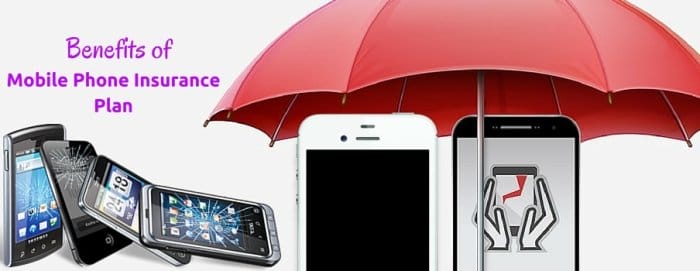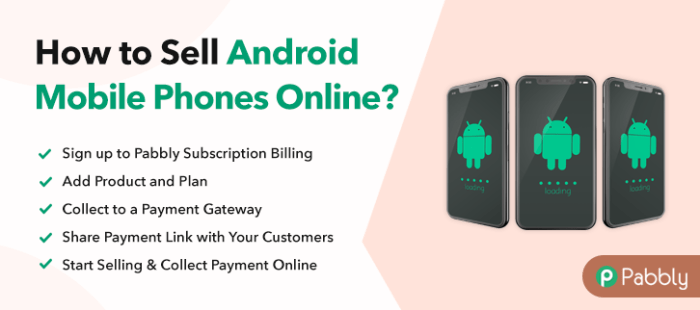In today’s digital age, mobile phones have become indispensable tools, and with that comes the need to protect these valuable devices from unexpected damage or loss. Mobile phone insurance offers a safety net for consumers, providing peace of mind and financial protection.
As an insurance professional, mastering the art of selling mobile phone insurance can open up a lucrative and rewarding career path. This comprehensive guide will equip you with the knowledge and strategies to excel in this field, helping you unlock your full potential and achieve remarkable sales success.
With a thorough understanding of market dynamics, product differentiation, and target audience segmentation, you’ll be able to tailor your sales approach to resonate with customers’ unique needs and concerns. Competitive analysis will empower you to identify market gaps and position your insurance offerings strategically.
By exploring various sales channels, pricing strategies, and marketing techniques, you’ll discover the most effective ways to reach your target audience and drive sales.
Market Research

Understanding customer needs and preferences for mobile phone insurance is essential for developing successful sales strategies. Market research provides valuable insights into customer behavior, enabling businesses to tailor their offerings and pricing accordingly.
Gathering Data
Gathering data through surveys, focus groups, and market analysis helps businesses understand customer perceptions, pain points, and willingness to pay for mobile phone insurance.
- Surveys: Online surveys can collect quantitative data on customer demographics, insurance preferences, and satisfaction levels.
- Focus Groups: Conducting focus groups allows businesses to gather qualitative insights into customer experiences, concerns, and expectations.
- Market Analysis: Analyzing market trends, competitor offerings, and industry data provides valuable context for understanding the competitive landscape and identifying market opportunities.
Tailoring Insurance Offerings
Market research findings can be used to tailor insurance offerings that meet specific customer needs.
- Coverage Options: Understanding customer preferences for coverage options, such as accidental damage, theft, and loss, helps businesses design insurance plans that align with customer expectations.
- Pricing Strategies: Market research can inform pricing strategies, ensuring that insurance plans are competitively priced while maintaining profitability.
- Distribution Channels: Identifying preferred distribution channels, such as online platforms, retail stores, or mobile network operators, enables businesses to reach their target audience effectively.
Product Differentiation
In the fiercely competitive mobile phone insurance market, differentiating your product from those of your competitors is crucial for capturing and retaining customers. By offering unique features and benefits, you can create a compelling value proposition that sets your insurance apart and attracts customers.
Unique Features and Benefits
To differentiate your mobile phone insurance product, consider incorporating unique features and benefits that address specific customer needs and pain points. For example, you could offer:
- Comprehensive coverage: Provide coverage for a wide range of risks, including accidental damage, theft, loss, and liquid damage.
- Fast and easy claims process: Offer a streamlined claims process that minimizes hassle and inconvenience for customers.
- Competitive premiums: Price your insurance competitively to attract cost-conscious customers.
- Excellent customer service: Provide exceptional customer service that is responsive, knowledgeable, and helpful.
Increased Customer Value and Loyalty
By differentiating your mobile phone insurance product, you can increase customer value and loyalty. Customers are more likely to choose and remain loyal to an insurance provider that offers unique features and benefits that meet their specific needs. This can lead to increased sales, improved customer satisfaction, and reduced churn.
Target Audience

Identifying the target audience for mobile phone insurance is essential to tailor marketing and sales strategies effectively. Understanding their specific needs, concerns, and behaviors enables insurers to create products and services that resonate with the target market.
Demographics
Segmenting the market based on demographics such as age, gender, income, and location can help insurers target specific customer groups. For instance, younger individuals and urban dwellers are more likely to own smartphones and may be more receptive to mobile phone insurance.
Behavior
Analyzing customer behavior, including their mobile phone usage patterns, can provide valuable insights. Frequent travelers or those engaged in high-risk activities may have a greater need for mobile phone insurance. Additionally, understanding customers’ purchasing habits, such as their preferred channels and price sensitivity, can aid in tailoring marketing efforts.
Purchasing Patterns
Examining customers’ purchasing patterns, such as their frequency of buying mobile phones and their willingness to pay for insurance, can help insurers develop targeted marketing campaigns. Additionally, analyzing customer retention rates and reasons for switching insurance providers can provide insights into improving customer satisfaction and loyalty.
Benefits of Understanding the Target Audience
- Customized Products and Services: Insurers can design insurance products that address the specific needs and concerns of the target audience.
- Effective Marketing: Tailored marketing messages can resonate better with the target audience, increasing conversion rates.
- Improved Customer Service: Understanding the target audience enables insurers to provide personalized customer service, enhancing customer satisfaction.
Competitive Analysis

In today’s saturated mobile phone insurance market, analyzing competitors’ offerings is crucial for gaining a competitive edge. It provides valuable insights to identify gaps, capitalize on opportunities, and develop a strong market position.
To conduct a comprehensive competitive analysis, follow these steps:
Research Competitors
- Identify direct and indirect competitors in the mobile phone insurance industry.
- Gather information about their products, pricing, terms, and conditions.
- Analyze their marketing strategies, customer reviews, and social media presence.
Analyze Market Share
- Assess competitors’ market share to understand their position in the industry.
- Identify market leaders and challengers, and study their strategies for success.
Compare Products and Services
- Compare your mobile phone insurance product with competitors’ offerings.
- Evaluate coverage, deductibles, claim process, and customer service.
- Identify areas where your product excels and areas where it falls short.
Review Pricing Strategies
- Analyze competitors’ pricing strategies to determine their competitive advantage.
- Compare your pricing with theirs to ensure you offer a competitive rate.
- Consider offering discounts, promotions, or bundled packages to attract customers.
Identify Gaps in the Market
- Based on your analysis, identify gaps in the market that competitors are not addressing.
- Develop unique features or services to fill these gaps and appeal to a specific customer segment.
Develop a Competitive Position
- Based on your analysis, define your competitive position in the market.
- Communicate your unique value proposition and differentiation clearly to potential customers.
Sales Channels

Offering mobile phone insurance through multiple sales channels can increase accessibility and convenience for customers. Understanding the different channels available and selecting the most suitable ones is crucial for maximizing sales and reaching the target audience effectively.
Direct Sales
Direct sales involve selling insurance directly to customers through company representatives. This channel provides personalized attention and allows for detailed explanations of policy features and benefits. It also enables immediate policy issuance and claim processing, enhancing customer satisfaction.
- Advantages:
- Personalized service and tailored recommendations.
- Immediate policy issuance and claim processing.
- Stronger customer relationships and loyalty.
- Disadvantages:
- Higher operational costs due to the need for trained sales representatives.
- Limited reach compared to other channels.
- Inconvenience for customers who prefer self-service options.
Retail Stores
Retail stores provide a physical location for customers to purchase mobile phone insurance. This channel offers convenience, as customers can easily walk in and inquire about policies. It also allows for product demonstrations and hands-on experience, which can be particularly beneficial for complex insurance products.
- Advantages:
- Convenience and accessibility for customers.
- Opportunity for product demonstrations and hands-on experience.
- Potential for impulse purchases.
- Disadvantages:
- Limited selection of products compared to online channels.
- Sales representatives may not have in-depth knowledge of all products.
- Customers may feel pressured to make a purchase in a physical store.
Online Platforms
Online platforms, such as company websites, e-commerce marketplaces, and comparison websites, provide a convenient and efficient way for customers to purchase mobile phone insurance. This channel offers a wide range of products to choose from, enabling customers to compare prices and features easily.
It also allows for self-service options, providing flexibility and convenience to customers.
- Advantages:
- Wide range of products to choose from.
- Easy comparison of prices and features.
- Self-service options and convenience.
- Lower operational costs compared to other channels.
- Disadvantages:
- Lack of personalized service and tailored recommendations.
- Customers may feel overwhelmed by the number of options available.
- Potential for fraudulent activities and scams.
Pricing Strategy

Crafting an effective pricing strategy for mobile phone insurance requires careful consideration of profitability and customer value. Setting competitive prices, understanding customer perception, and aligning pricing with sales performance are essential elements of a successful pricing strategy.
Balancing Profitability and Customer Value
Striking the right balance between profitability and customer value is crucial. Setting prices too high may deter customers and limit sales, while pricing too low may result in insufficient profit margins. A well-crafted pricing strategy should aim to maximize profitability while ensuring that customers perceive the value of the insurance product.
Setting Competitive Prices
Conducting thorough market research and analyzing competitor pricing is essential for setting competitive prices. Researching the prices of similar insurance products in the market helps determine a fair and competitive price point. Additionally, analyzing competitor pricing strategies can provide insights into effective pricing tactics and help identify potential gaps in the market.
Impact of Pricing on Customer Perception and Sales Performance
Pricing plays a significant role in shaping customer perception and sales performance. Customers often associate higher prices with higher quality and reliability. Setting a price that is perceived as fair and reasonable can positively influence customer perception and increase the likelihood of purchase.
Additionally, pricing strategy can impact sales performance. Competitive pricing can attract customers and drive sales, while overly high prices may result in lower demand.
Marketing and Promotion

Creating a well-structured marketing and promotion strategy is essential for raising awareness and driving sales of mobile phone insurance. This involves leveraging various channels to effectively communicate the benefits and value of the insurance to potential customers.
The key to successful marketing is understanding the target audience and tailoring messages accordingly. Identifying their pain points, concerns, and motivations allows for creating compelling campaigns that resonate with them.
Marketing Channels
To reach the target audience effectively, a diverse range of marketing channels should be utilized:
- Digital Marketing: This includes search engine optimization (), pay-per-click (PPC) advertising, social media marketing, and email marketing. These channels allow for targeted campaigns based on demographics, interests, and online behavior.
- Content Marketing: Creating informative and engaging content, such as blog posts, videos, and infographics, can educate and persuade potential customers about the benefits of mobile phone insurance.
- Social Media: Social media platforms offer a direct line of communication with potential customers. Engaging with them through posts, stories, and live videos can build relationships and trust.
- Influencer Partnerships: Collaborating with influential individuals in the tech or lifestyle space can help reach a wider audience and build credibility for the insurance product.
- Public Relations: Generating positive media coverage through press releases, interviews, and product reviews can increase brand awareness and credibility.
Marketing Strategies
Effective marketing campaigns should focus on:
- Clear Messaging: Communicating the benefits and value of mobile phone insurance in a clear and concise manner is crucial for capturing attention and driving conversions.
- Visual Appeal: Utilizing visually appealing graphics, videos, and images can make campaigns more engaging and memorable.
- Call to Action: Including a clear call to action, such as visiting a website or making a purchase, guides potential customers towards the desired outcome.
- Personalization: Tailoring marketing messages based on individual preferences and behaviors enhances the relevance and effectiveness of campaigns.
- Data-Driven Optimization: Continuously monitoring campaign performance and making data-driven adjustments can improve results and maximize ROI.
Customer Service
Providing excellent customer service is crucial for ensuring customer satisfaction, retention, and building brand loyalty. When customers experience exceptional service, they are more likely to remain loyal to the brand and recommend it to others.Exceptional customer service involves handling customer inquiries and complaints promptly, efficiently, and with empathy.
It also includes going above and beyond to meet customer expectations and resolving issues quickly and effectively.
Building Customer Relationships
By providing excellent customer service, businesses can build strong relationships with their customers. This can lead to increased customer loyalty and referrals, as satisfied customers are more likely to recommend the brand to their friends and family.
Risk Management
Risk management is a critical aspect of mobile phone insurance, as it helps mitigate potential losses and ensure the long-term sustainability of the insurance business.
Effective risk management involves assessing and underwriting risks, setting appropriate premiums, and implementing risk control measures.
Assessing and Underwriting Risks
Assessing risks involves identifying and evaluating the factors that could lead to claims, such as the age and condition of the phone, the user’s claims history, and the level of coverage desired. Underwriting involves determining the likelihood and severity of claims based on the assessed risks and setting premiums accordingly.
Setting Appropriate Premiums
Premiums should be set at a level that is sufficient to cover expected claims and operating expenses, while also being competitive in the market. Premiums can be adjusted based on factors such as the level of coverage, the deductible, and the claims history of the policyholder.
Implementing Risk Control Measures
Risk control measures are designed to reduce the likelihood and severity of claims. These measures can include educating policyholders about how to prevent damage to their phones, providing repair or replacement services, and partnering with reputable repair centers.
Importance of Risk Management
Effective risk management is essential for the long-term sustainability of the mobile phone insurance business. By accurately assessing and underwriting risks, setting appropriate premiums, and implementing risk control measures, insurers can minimize losses and ensure that they are able to meet their obligations to policyholders.
Legal and Regulatory Compliance

Ensuring adherence to legal and regulatory requirements is paramount in the mobile phone insurance industry. Navigating complex regulations and staying updated with industry standards can be challenging, but it’s crucial to maintain compliance to protect consumers and safeguard your business.
Transparency and Ethical Conduct
Transparency and ethical conduct are cornerstones of the insurance industry. Ensuring clear and straightforward communication with customers is essential to build trust and credibility. Adhering to ethical standards, such as avoiding misrepresentation or misleading information, fosters a positive reputation and enhances customer satisfaction.
Final Summary

Remember, selling mobile phone insurance is not just about pushing a product; it’s about providing a valuable service that gives customers peace of mind and protects their investment. By embracing a customer-centric approach, delivering exceptional service, and staying updated with industry trends, you’ll build a loyal customer base that trusts your expertise and values your recommendations.
Embrace the opportunity to make a real difference in people’s lives by safeguarding their mobile devices and empowering them to embrace technology with confidence. As you embark on this exciting journey, remember that success in selling mobile phone insurance lies in your ability to connect with customers, understand their needs, and provide tailored solutions that bring them true value.
Q&A
What are some unique features and benefits that can differentiate my mobile phone insurance product from competitors?
Consider offering additional coverage options, such as accidental damage, theft, or loss, that cater to specific customer needs. You can also emphasize your product’s quick and hassle-free claims process, 24/7 customer support, or exclusive discounts and promotions.
How can I effectively segment my target audience for mobile phone insurance?
Segment your target audience based on factors such as age, income level, lifestyle, and mobile phone usage patterns. This will allow you to tailor your marketing and sales strategies to resonate with each segment’s unique needs and preferences.
What are some effective ways to market and promote mobile phone insurance to my target audience?
Utilize a mix of traditional and digital marketing channels to reach your target audience. Create engaging content, such as blog posts, videos, and social media campaigns, that educate and inform potential customers about the benefits of mobile phone insurance. Partner with mobile phone retailers, repair shops, and other relevant businesses to expand your reach and generate leads.



